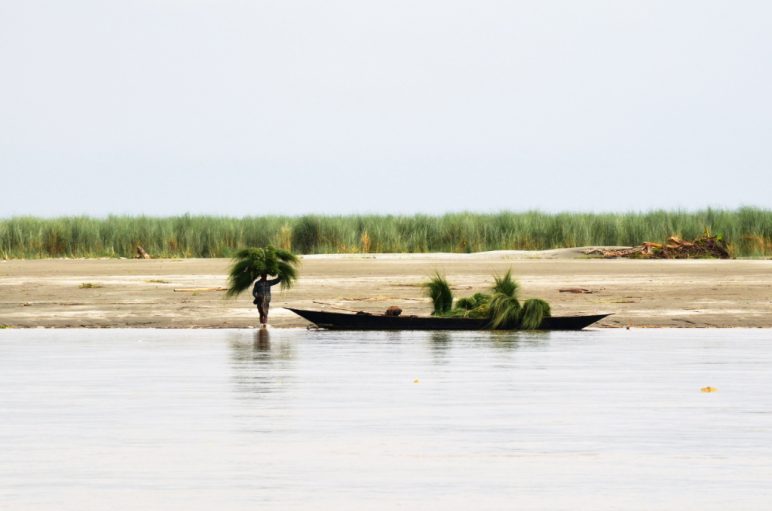Floods cause sand to cover agricultural land, forming sandbar one by one like this
If you have read SHARE July 2018, you are not unfamiliar with the concepts of Disaster Management and Disaster Risk Reduction (DRR). Through the ePrayer this week, we are going to have a look at Kurigram District in northwestern Bangladesh to understand the challenges of poor community doing disaster management work.
Heavy rains usually occur during the rainy season in northwestern Bangladesh. In addition to numerous rivers flowing throughout Kurigram District, continuous heavy rains lead to frequent flooding. Besides, nearly half of the population in the province are living under poverty, increasing their vulnerability when facing climate disasters. Our Bangladesh partner Lutheran Aid to Medicine in Bangladesh (LAMB) works in a community where there is a lack of road and transport facilities. Residents rely on motorcycles and boats to get around. Therefore, when floods occur, not only farmland and houses are submerged and damaged, traffic roads are also destroyed by floods. This significantly increases the difficulty of rescue and relief. Even after flooding, villagers cannot transport agricultural products to city for sale.
Following a flooding, residents realised the importance of Disaster Risk Reduction. Last year, 28 villages comprising of about 3,000 villagers decided to build a dam in order to protect themselves from the wrath of river. The entire construction was led by Disaster Management Committees with the cooperation of village council, the government and other NGOs. Villagers worked together to collect materials. They collected 2,000 bamboos, 8,000 sacks and approximately 200,000 Takas (equivalent to HK$18,500). Village council led the whole process, with young and old people working together. Some of them were responsible for setting up the dam structure with bamboo poles, while others filled the sacks with sand and stones. At the end, they built a 30-foot high and one-kilometer long dam. This dam could protect villagers in 28 villages and 100 hectares of farmland (equivalent to 100 standard football fields). The action of villagers building dam in one heart received local news coverage and received appreciation from government officials.
Unfortunately, when CEDAR staff visited the community this year, they found that the above dam was no longer there, because the dam got destroyed by a super flood last year. However, this construction project had indeed demonstrated the great capacity of villagers in 28 villages in which they cooperated across villages and practised division of labour to collect different materials, and even engaged government department to participate in community development.
Disaster prevention may not be easy but the experience of Bangladeshi residents proved that despite facing difficulties, we still have to keep going and learn from failures!
Let us pray for villagers in this village and our partner:
- Pray for the community in Kurigram. Apart from residents being threatened by floods, some lands are eroded due to flooding, causing desertification and damage to residents’ livelihoods
- As our partner, LAMB, works in such a challenging area, disaster management is indispensable. May God grant LAMB workers wisdom and flexibility to help the communities
- Pray for ourselves. May churches and believers living in developed region understand the importance of disaster management to community sustainable development, and support needy communities in facing disasters resulted from climate change. May we also learn to practise reducing waste and carbon, and pursue simplicity in our everyday life





